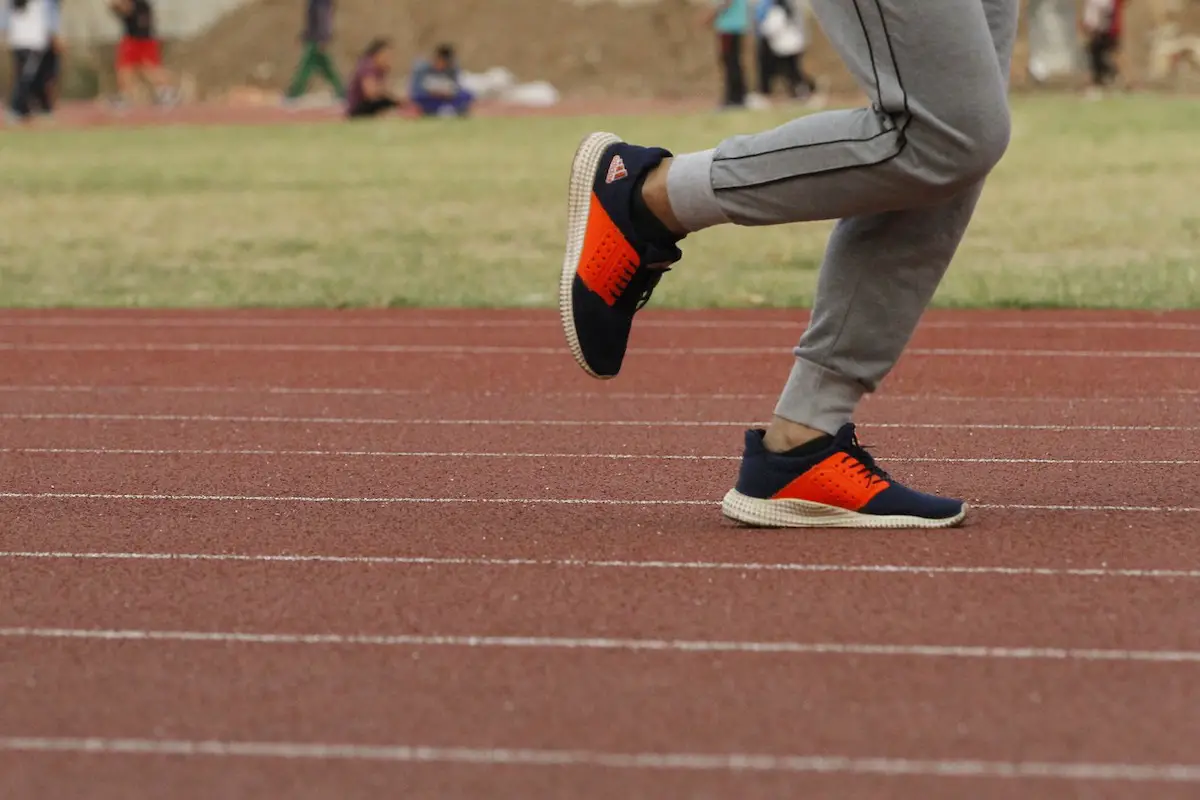People always go walking, strolling, and running on the streets. But we cannot deny that it is not easy to run on a busy or even a quiet street because it is not a controlled environment specifically meant for running. The best place to run free in a controlled environment where you can easily measure and record running distance is a running track.
You would have heated about lapses and miles to run on the track. Do you know how many times a track is a mile? This article will tell you about a mile on the track and give detailed information about the running track and its kinds. So, let’s read below.
How Many Times Around A Track Is A Mile?
If you want to run regularly and improve your speed, running on a track is a good option. You can practice running without any distractions or obstacles. The best part is that you can easily calculate the distance you run to understand your speed better and run. It will be better to adjust your other physical exercises when you get a clear idea about your miles.
The distance of an outdoor track is 400 m in the first lane. So, 100 meters will be the length of one straightaway. Consequently, 1 mile around the track will be 4 laps or 1,600 meters. You can use these numbers to calculate further other measurements.
You can easily record your running with this calculation and set a specific exercise schedule to better check your physical workout.
Now, you know that 4 laps make a mile on the track, now let’s know more about a track in detail.
What Is A Track?
A running track is an all-weather track specially designed for smooth running. It is an artificial running surface made from a special rubber. The running track is used for track and field games involving running, jumping, and throwing. It has a smooth and consistent surface for competitors to practice without affecting weather conditions.
Historically, a track was prepared by using mud, mud, rock, and sand to make a consistent surface for running. Still, these kinds of tracks are used in places around the world. The artificial tracks began in the 1950s that were made with integrating materials like rubber and Asphalt. The track was initially used in the Summer Olympics in Melbourne in 1956. Consequently, they built many such tracks in the 1960s, and they are still in use to date.
In the mid-1960s, new tartan tracks were developed that were just used for horse racing at the beginning. Gradually, it was used in the Olympics, and many top universities around the world installed it. Since then, it has become a trend to use an all-weather surface.
World athletics is a governing body that looks after all kinds of track and field sports in international games. It publishes the size and material specifications for different global championships that come under it. In order to organize a running race, you must invest time in planning the type of track for the event. In addition to that, unique running medals are essential. You can think of a creative design for the race medals custom for this running race. This is because it not only represents the race but is also a meaningful souvenir for the athlete.
Now you would have understood what a track is and how it came to be used worldwide. Next, let us know about its measurements.
What Is The Measurement Of A Running Track?
As mentioned earlier, the proper length of the first lane of a running track is 400m. However, some tracks are not built according to it. So, rather it has a distance of 440 yds. Before making stand rules, a track was made to fit the available space where different fields had different measurements, like the Franklin field.
So, the measurements of tracks have always been different. Now, international meets of sports organizations are conducted to finalize a track measurement. But, the standard length of lane 1 among the 9 lanes remained 4000 meters.
Now, you know about the measurement of running tracks. Next, let us know about the different kinds of running tracks.
What Are The Different Kinds Of Running Tracks?
Whether you run for a competition or just for leisure, you need to consider the kind of your running track. The surface makes a big difference that affects your balance, speed, and running technique. At the same time, different kinds of tracks have their respective advantages and disadvantages. Also, you need to prioritize your safety on the track.
A perfect athletic track has the right balance of softness to prevent injuries and hardness to maintain stability. Let us know about the common athletic running tracks with different materials like:
Clay And Cinder Tracks
Before they developed modern running tracks, the tracks were made from clay and Cinder. These natural tracks combine fine ash, carbon, or rock. This combination gives a smooth surface with minimal force impact on joints. But it becomes soggy after heavy rain making holes and irregularities on track a problem. So, it is expensive to maintain these tracks.
Grass and turf
The grass track is another natural running track. It is soft easy to run, which puts less pressure on your foot, reducing injuries. Also, the slightly uneven grass track enemies’ small muscles, improving the balance. It is a break from an artificial track, but rain can make it slippery and dangerous for runners.
Asphalt
Asphalt surface is an all-weather track and the first modern track for a professional competition. It is made from Asphalt with rubber and sand, making it durable and unaffected from bad weather. These tracks are good for fast and excellent running speed. But it is expensive to make summer heat and soften the track.
Synthetic
Synthetic rubber track is good for optimal running performance. It has rubber particles and latex or polyurethane. There are further two kinds of synthetic rubber tracks: Polyurethane track surfaces and Latex track surfaces.
After these kinds of tracks, we have mentioned important rules to run on a track.
Some Important Rules for Running on a Track are:
- The distance you choose to run should be comfortable for you.
- There are multiple lanes meant to run in the correct lane for different purposes.
- Run in the right direction to prevent collisions.
- Please don’t stop on the track; move off from it.
- Pass your running direction choice to other runners.
- Follow the hours of running track use.
Conclusion
Now we have reached the end of this article. Do we hope that you will find an answer to your question: How many times around a track is a mile?
Now let’s take a quick recap.
The running track is an all-weather running track for smooth and stable running used for competitive and leisure purposes. The first lane of a track measures 400 m. So, 4 rounds around the track make a mile. There are four main tracks: clay and Cinder track, grass and turf tracks, Asphalt, and synthetic track. There are international level meets to decide the measurement and kind of tracks used in various competitions.
You May Like These Articles As Well:
 Being Human
Being Human





